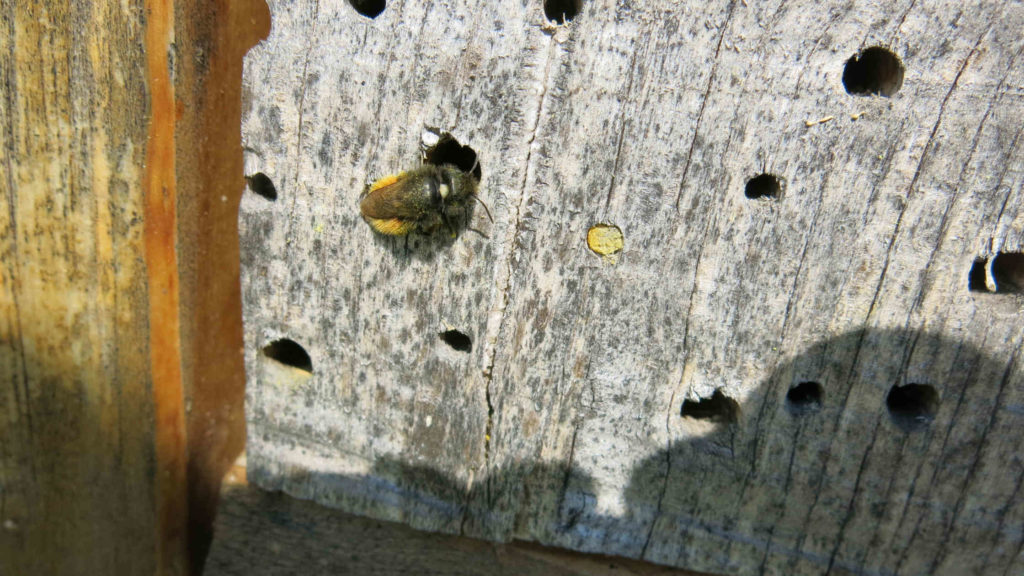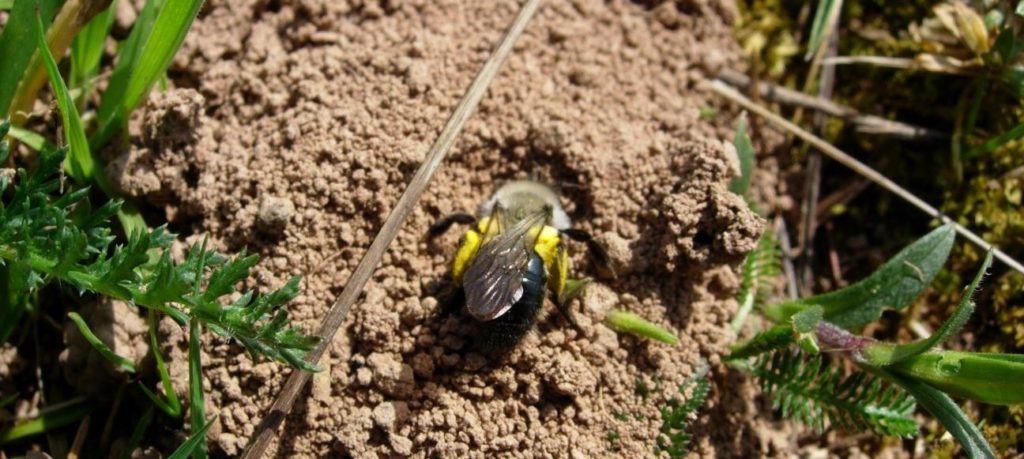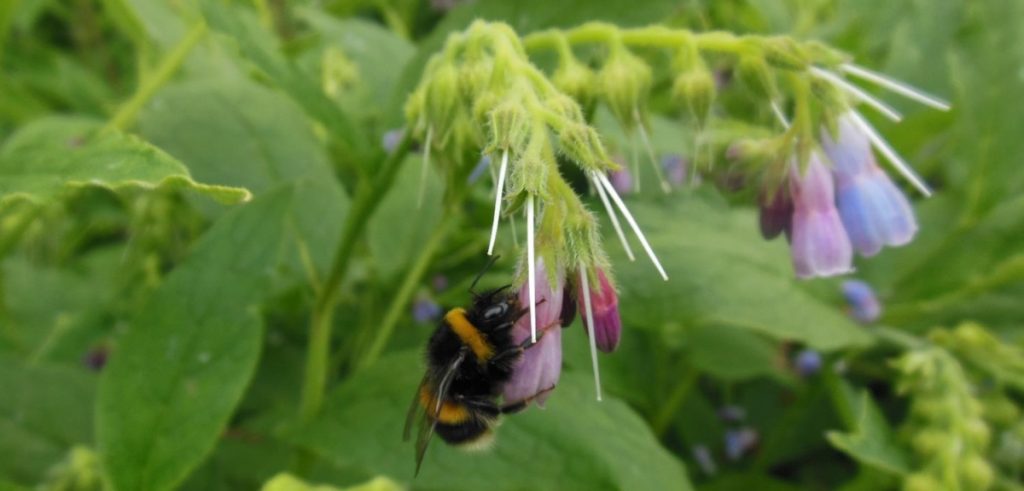Many, many years ago, I was coordinating a federal honey bee selection project in Germany. There was a problem, though: The season doesn’t start at the same time in the whole country. To make the data comparable, we asked the beekeepers to start with their observations when the goat willow started to bloom. This was my entry in the field of bee phenology. Phenology is the study of periodic events in the life-history of plants and animals. For instance, the beginning of the flowering of a certain plant. It happens every year. In some cases the start in one species triggers something in another species. In the example of goat willow and honey bees: This is the first abundant pollen source for honey bee colonies in Germany. The colonies at this moment begin to grow rapidly.
That was the reason why we chose that indicator for starting the work in this project. In the warm Southwest, this may have been in early March, while in Northern Germany the observations started three weeks later. But the recorded data always corresponded to a defined stage of the colony. In the period of that project, there was also another experience that consolidated my interest in this area. In 2008, a beekeeper in Hesse (Central Germany) reported that the weather during the goat willow flowering had been poor. Cold and rainy. In consequence, his colonies weren’t very active in this period. They didn’t get much of that precious pollen in. He was concerned because his colonies didn’t develop very well that spring. That got me thinking of what may have happened to willow specialists like Andrena vaga. This is a solitary mining bee that feeds its larvae only with willow pollen.
Bee phenology and bee health
That’s the connection between bee phenology and bee health: Both the spring development of honey bee colonies and the flight period of A. vaga depend on willow. The social bees less than the solitary ones, but there’s a strong link between the plant and the bees. Nutrition is an overarching principle of bee health, so the lack of an important pollen source has an impact. But it’s not only poor weather that affects the connection between bees and flowers. The global warming due to the climate crisis anticipates the flowering of many plants.
To stay with the goat willow: during that project (2004-2008) the earliest reports came around March 10th. It was always the group from the extreme Southwest to notify the first data. It’s the warmest region in Germany (and it’s just lovely…), so obviously they start before anyone else in the country. Most spring data from other regions came in about 10-14 days later. More leaning towards the end of March. According to the German meteorological service (DWD), the first notice of flowering goat willow in 2020 was February 12th. The average beginning for the whole country was March 7th. That’s anticipating the average by about two weeks, compared to the project period. Of course, my project data aren’t as complete as those of the DWD, but you get the picture.
Material for an educated guess
So, the question remains, how does this affect the willow specialist A. vaga? I didn’t find anything about this species specifically. But there are some papers dealing with the mismatch between flowering plants and pollinators due to climate change. The publication from Schenk and colleagues caught my eye. It deals with the consequences of the mismatch of flowering and the fitness of three mason bee species (survival, reproductive success etc.). They studied Osmia cornuta flying in early spring, O. bicornis for a species active in mid-spring, and O. brevicornis for late spring. The first two species feed on a variety of flowers, while the latter is specialized on flowers of the cabbage family.
Despite dealing with completely different species, this paper gives some material for an educated guess about the question I had. A. vaga is a very early flying species. In that it resembles O. cornuta. It is a pollen specialist – like O. brevicornis. Of course, there are more differences than similarities between these species. But let’s try if we find some common principles that may apply to our question here. An educated guess often is the starting point of research, so let’s go for it.
Schenk and co-workers tested the mismatch in flight cages: with a variety of flowers for the two generalists and mustard and oilseed rape for the specialist. There were also nesting opportunities (“bee hotels”) to look how much offspring they could rear. One group got the flowers immediately after hatching. A second one had to wait three days for them and the third one even six days. You have to consider that these bees didn’t eat a thing since they finished the provisions their mother left in the nest in the previous year. If they can’t feed immediately, they rely on their body fat.
Consequences of the mismatch between plant and bee phenology
The study was quite telling. O. brevicornis, the pollen specialist, didn’t survive the starvation phase of six days. For the other two species the effect wasn’t that drastic: about 20% of O. cornuta and 5-10% of O. bicornis survived this long period without flowers. The picture was similar with a mismatch of three days. More bees survived, but the effect was still worst on the late flying pollen specialist. O. brevicornis had the lowest survival even when they didn’t have any mismatch at all. The effect was similar when it came to the offspring these bees produced: the late-flying pollen specialist was always the most vulnerable, early-flying and generalist O. cornuta resisted best. O. bicornis was intermediate.

It would be easy now to conclude that specialists are more vulnerable. Therefore, also my species of concern, A. vaga, should be, right? Wait a second. The study I described was experimental, which means that they tried to test the effect of a single factor. The mismatch between plant and bee phenology in this case. But actually, there are (at least) two when it comes to transfer the results to another species. In addition to the starvation period, there was also the bee phenology itself. Meaning the flight period of the different bee species. Poor weather and starvation periods may be something this species has to deal with anyway, because it’s synchronized to an early flowering plant. It may, therefore have similar mitigation abilities like O. cornuta in the study. To be honest, I would expect A. vaga to be an intermediate case: a mix between the resilience of the early-flying and the vulnerability of the specialist species. Educated guess, nothing else.
What does this mean for conservation?
Bee phenology may be an important element for the resilience or vulnerability of different bee species to the effects of the climate crisis. This definitely needs more data. Otherwise we stay at my educated guess level. It’s sufficient for starting some measures. Like making sure that there are sufficient and diverse pollen sources. A. vaga is a specialist on willows, but there are different species. Which have slightly different flowering periods. Also the different microclimate causes a first willow to flower slightly earlier than another one of the same species on a cooler spot a few hundred metres away. Same is true for the pollen sources of other pollen specialists.
Does this mean the effect of mismatches of plant and bee phenology isn’t that bad? No, it’s definitely a reason for concern. What I’m trying to explain here: we can’t just assume that findings from one study apply on all other bee species or conditions. There’s this range of insecurity I wrote about last time. We have to start before we’re ready, without knowing everything. At the same time, we have to be flexible enough to adapt our measures as soon as we know more, if necessary. Navigation on sight, not a one-fits-all, forever valid solution. In addition, the biodiversity and the climate crisis aren’t separate from each other. If we don’t want to get into even bigger trouble we already are, we have to address both issues at the same time. Finally, we have to communicate these insecurities to a broader audience. Which is what I’m trying to do with a special focus this year.
This is the first instalment of a series on the effects of climate change on bee health. I’m dedicating February 2021 to this topic and will show different aspects in four different posts. For deeper insight, I’m available for talks and seminars – online or in real-life, pandemic permitting. Contact me for more details.




I agree that specialist bees are most at risk from phenological mismatch. Generalists like honey bees can adapt as long as they are in an environment with diverse range of forage.
Phenological mismatch is also a problem for some plants., particularly orchids in the genus Ophrys. An example is early spider orchid which uses an exacting matching pheromone on female Andrena nigroeanea to trick males into Speudo-copulation to ensure it’s pollination. The makes emerge first in spring before females emerge and mate with the orchid flowers. What’s happening now is the bees are emerging 3-4 weeks earlier before the orchids are in bloom. By the time the orchids catch up the makes have mostly already mated and died and any males still around have lots of female bees to mate with so are less interested in the flowers. The result is many of these orchids could start to decline. Many Ophrys orchids are already rare. Quite a few rely on cuckoo bees for pollination and they themselves may suffer phenological mismatch between their specific hosts and potentially their hosts (Andrena and Anthophora bees) specific food plants.
It’s quite worrying that these complex relationships could unravel and in some cases a single mismatch could be the down fall of several species which are tied into a complex web of relationships.
The climate crisis and the biodiversity crisis unfortunately enhance each other. We’re seeing that this year quite clearly, I think.